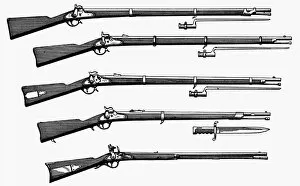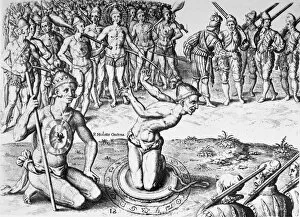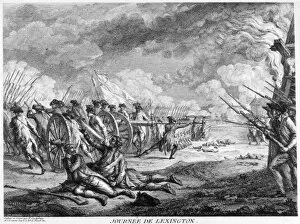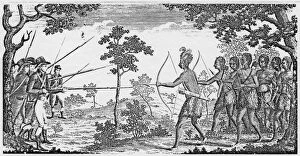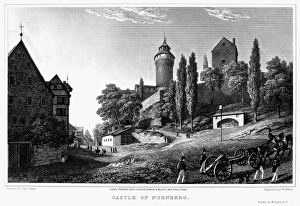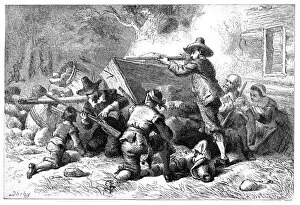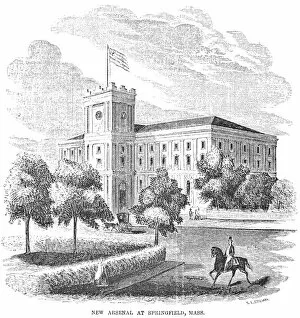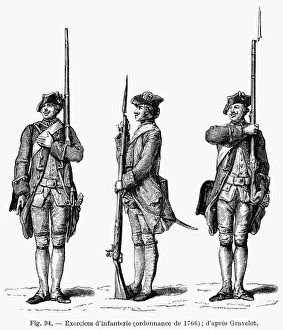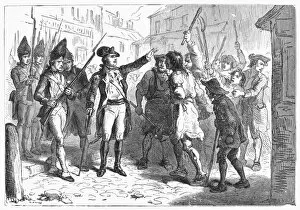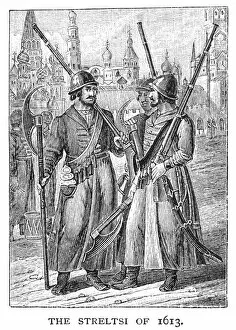Musket Collection (page 19)
"The Musket: A Weapon of Revolution and Victory" From the battlefields of the Revolutionary War to the Napoleonic Wars
All Professionally Made to Order for Quick Shipping
"The Musket: A Weapon of Revolution and Victory" From the battlefields of the Revolutionary War to the Napoleonic Wars, the musket stood as a symbol of strength and determination. Depicted in Howard Pyle's masterpiece "The Nation Makers, " it immortalizes the Battle of Brandywine, where brave soldiers fought for freedom. Dating back to the 16th century, an arquebusse was among its predecessors. This early firearm paved the way for advancements that would shape history. Laodicea Dicey Langston, a South Carolinian heroine depicted in a mezzotint by Tompkins Harrison Matteson, exemplified this weapon's power during her valiant defense against Loyalist troops. French uniforms during Napoleon's era showcased both style and functionality. As these soldiers marched into battle with their trusty muskets in hand, they embodied discipline and unity. Across continents, such as India, smoothbore muskets like Pattern 1858 played crucial roles in conflicts. These firearms became synonymous with resistance against oppression. In American history, no flag waved more proudly than the Pine Tree flag during the Revolution. It flew high above patriots armed with muskets and rifles from 1800 onwards - instruments that safeguarded liberty itself. Brigadier General John Stark commanded victorious American forces at Bennington while wielding his trusted musket. Alonzo Chappel's painting captured this historic moment forever etched into our collective memory. The first blow for liberty resounded through Lexington and Concord – events immortalized by A. H Ritchie's colored engraving from the 19th century. Muskets fired defiantly as colonists fought bravely against British tyranny. French soldiers donned distinctive uniforms throughout history; their attire reflected changing times but never diminished their reliance on reliable weaponry like muskets – weapons that shaped nations' destinies since time immemorial.




